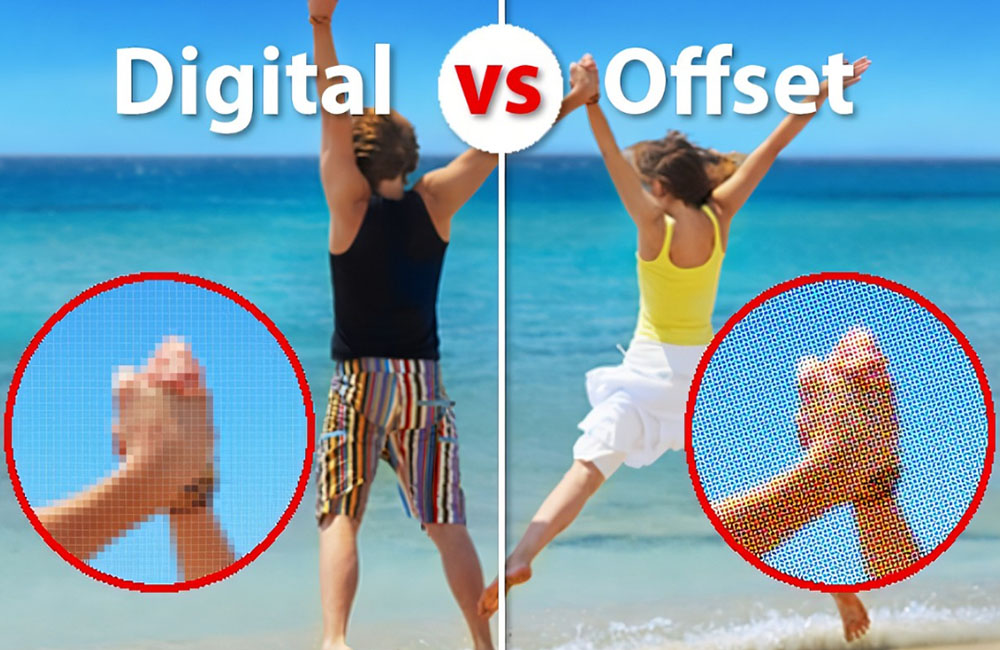Digital printing vs. Traditional printingDigital printing is to use the pre-print system to transmit the graphic information through the network to the printing press to print. Its biggest feature is non plate-making, timely error correction, variable data printing,fast turnarounds.
Digital printing technologies now mainly include inkjet imaging, electrostatic imaging, magnetic recording imaging, direct imaging (DI), and electrocoagulation imaging technology
As we all know,traditional printing need to design, plate making, printing, personalized process design, die cutting, back channel packaging ect.The process is complex, poor timeliness, need to repeatedly print, modify, in the sample typing, then have the final draft.
So the digital printing has advantages.

Digital Printing vs. Offset Printing
About the process,because digital printing machines do not require printing plates. Instead of using metal plates to transfer an image, digital printing presses print the image directly onto the media substrate.Digital files such as PDFs or desktop publishing files can be sent directly to the digital printing press to print on paper, photo paper, canvas, fabric, synthetics, cardstock and other substrates.
While offset printing is analog printing method.With the help of rubber to transfer the prints to the substrate.
About the quantity,offset printing works better when you require large quantity (into the 100s or 1000s) or are using brand-centric Pantone color. Plus, offset lets you utilize a range of custom papers and specialty inks. However, if you only need a small quantity (let’s say less than 100) or information is required, then digital printing is your best choose. Digital printing can give you the high level of quality that makes your product stand out.
Digital printing inks
Digital printing inks include cyan, magenta, yellow and black (CMYK) toner and ink, as well as extended color gamut inks such as orange, blue and green as well as specialty dry inks for metallic, white or clear effects.
Types of Digital Printing
Digital printing can be used in several different ways.It can be used in:
- Inkjet and Laser are the most used forms of digital printing. Inkjet and laser printers are found everywhere, from offices to private homes.
- Solid Ink is used more often for larger-scale printing operations, such as by graphic designers. Solid ink printing uses a waxy resin-polymer to create striking advertisements and long-lasting images. Digital Press is great for high-volume orders such as booklets, brochures, leaflets, labels, and business cards.
- Dye Sublimation digital printing can be used alongside heat transfers to print images onto various fabrics for clothes, accessories, and merchandise.
Environmental protectionI had read one study about a question ‘what if all packaging was digitally printed?’ ,somone's response was that the industry would see a 26% reduction of the waste, equaling over 50+ billion tons.From the data,we can see the digital printing is help for environment protection.ConclusionWith all this in mind,digital printing is the best way to cut cost and time in the packaging industry.

